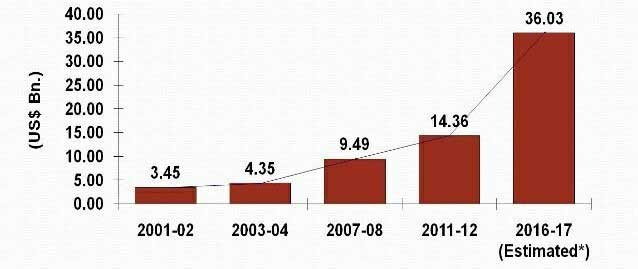Saif
Senior Member
- Messages
- 15,397
- Nation

- Axis Group


Bangladesh should invest in ‘Nanotechnology’ to enter in ‘Technical Textiles’ production
The history of nanotechnology begun by the physicist Richard Feynman who identified potentiality of nanotechnology in December 1959.Now it is assumed...
Bangladesh should invest in ‘Nanotechnology’ to enter in ‘Technical Textiles’ production
The history of nanotechnology begun by the physicist Richard Feynman who identified potentiality of nanotechnology in December 1959.Now it is assumed that the next industrial revolution is right around the corner because of nanotechnology.
Today when Bangladesh has a potential history of producing quality textile and apparel goods, the country should look for the opportunities of producing other value added products. Meanwhile the country has developed a good base in textile education. Numbers of Bangladeshi researchers are working abroad in different universities and companies, many of them on nanotechnology. Many of those researchers are willing to come back to Bangladesh with a mindset to help the country. If the government and private sector take initiative to invest in ‘Nanotechnology’ to produce different technical textiles and other textile support products, the existing workforce can come in to play.
Nanotechnology overcomes the limitations of applying conventional method to impart certain properties to textile materials. There is no doubt that over the years, nanotechnology has penetrated into every area of the textile industry and its presence will continue to increase.

Nanotechnology at the molecular level can be used to develop desired textile characteristics, such as high tensile strength, unique surface structure, soft hand, durability, water repellency, fire retardancy, antimicrobial properties. The textile industry has already been impacted by nanotechnology.

Figure 1: Application of nanotechnology in textiles.
Application of nanotechnology in Textile:
- Swimming suit
- UV protective Finish
- Self-cleaning fabrics
- Anti-static finishers
- Wrinkle free cloth
- Anti-bacterial finishes
Besides, in the smart clothes the textile structures themselves perform electronic or electric functions. Ideally, the Nanoelectronics components will be completely fused with the textile
material, resulting in that textile and non-textile components cannot be differentiated and 'foreign particles' can no longer be seen or felt.
Day by day, the importance of nanotechnology in the textile sectors is increasing all over the world. The global technical textiles market was valued at nearly US$ 155 Billion in 2015. On back of strong demand, by 2020, the global technical textiles market is estimated to pull in US$ 193 Billion in revenues as per the Future Market Insights information. A major portion of these Technical Textiles products are using nanotechnology.
China, India, Japan and many other countries already have taken necessary steps to give a new shape of their textile industry through nanotechnology.
Asia Pacific is the largest market for technical textiles, both in terms of production and consumption. Thus, many textile-manufacturing companies are investing in R& D to increase the production of technical textiles. The Asia Pacific technical textile market is expected to continue its dominance of the global market through 2020. In 2015, Asia Pacific accounted for nearly 40% revenue share of the global technical textiles market.
It is worthy to mention that China has launched a comprehensive program called “Double Incentive Scheme” for technical textiles. Whereas India has also issued relief packages for the promotion of technical textiles. India, in next 5 years, will provide $170-$200 million to promote technical textiles. And there is no doubt that this wise step will give India a huge advantage to gain the market of technical textiles.

Figure 2: Market size of Technical Textiles in India.
From this aspect, as a giant exporter of textile products, both the government and industrialists must take adequate step to sustain economic growth, which is not possible without exploring new areas. Therefore, it is time to allocate resources and cope with the modern trend of nanotechnology in textile to enhance and sustain the growth of our economy.
Researchers told that ‘Nanotechnology’ based production of textiles and technical textiles won’t require huge investment like the traditional textile companies require. The risk also will be less as Bangladesh also has a good local market. 170 million people in Bangladesh are using technical textiles and this trend will increase day by day. Such industry will also produce products which will be used as input materials to the other textile and allied industries.







